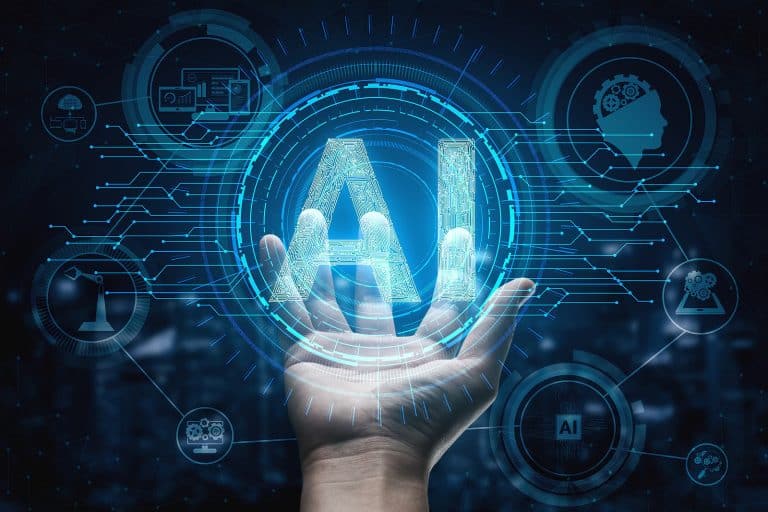Generative AI — systems that create text, images, audio, code and other media — has moved from an academic curiosity to a force reshaping how Americans work, learn, govern, and create. The technology is fast, useful, sometimes brilliant — and sometimes baffling or risky. If you’re curious about what comes next, this guide walks through realistic scenarios, evidence-based findings, policy moves, business opportunities, workforce impacts, and practical steps citizens and organizations can take to prepare.
Tone: empathetic and reassuring. Generative AI will change many things; most change creates both risks and opportunities. This article aims to help you understand what’s likely, what’s possible, and what you can do now.
Quick snapshot — what you’ll learn
- How generative AI is already affecting U.S. industries and everyday life.
- What university research tells us about the technology’s strengths and limits.
- Key regulatory and policy developments shaping the U.S. response.
- Jobs, education, and economic impacts — plus practical adaptation suggestions.
- Concrete, actionable recommendations for businesses, educators, and policymakers.
1) Where we are now: adoption, capabilities, and limits
Generative AI tools — large language models (LLMs), image generators, code assistants — have proliferated across enterprises, startups, and consumer apps. Adoption accelerated in 2023–2025 as models became cheaper to run and easier to integrate into products. Studies and industry surveys show measurable productivity gains when teams use these tools thoughtfully. For example, many organizations report faster drafting, ideation, and automation of routine tasks that frees human workers for higher-level work. McKinsey & Company
At the same time, academic research is clear about limitations. Top university labs show that current LLMs lack a coherent, grounded “model of the world” — they can generate convincing outputs without true understanding, and produce errors (“hallucinations”) that can be factual, biased, or even dangerous in certain contexts. This gap between surface competence and deep reasoning is central to how we should think about the future. MIT News
Stanford’s AI Index and similar trackers confirm that the U.S. remains a global leader in model development and research output, but competitors are closing gaps fast — meaning the U.S. advantage will depend on policy, talent, and investment, not just technical lead. Stanford HAI
2) Policy & governance: patchwork, momentum, and direction
Regulation and guidance are accelerating at federal and state levels. The federal government has issued executive orders and federal agencies are publishing guidance to encourage safe AI research and deployment — with an emphasis on transparency, standards, and risk-based oversight. At the same time, states like California are moving aggressively: recent state legislation requires major AI developers to disclose safety practices and incident reporting, signaling that state-level rules will shape industry behavior. These layered efforts reflect a broader reality: the U.S. is experimenting with a mixed governance model that blends federal guidance, state rules, and private safety norms. The White House+1
Practical implication: companies should expect a regulatory landscape that will tighten over the next several years. Preparing now — by establishing safety processes, documentation, red-team testing, and privacy protections — reduces legal and reputational risk.
3) Economic impacts and jobs: disruption + creation
Generative AI will both automate tasks and create new demand. Analyses from consulting firms and academic trackers show a complex picture: many routine cognitive tasks are highly automatable, while creative, managerial, and social roles will be augmented rather than replaced in the near term. McKinsey’s industry surveys document widespread business adoption and measurable gains — but also stress the importance of workforce retraining and responsible deployment to realize benefits. McKinsey & Company+1
Recent research tracking labor markets suggests that, so far, large-scale displacement has not yet materialized at the macro level — but the pace of technological improvement means we should expect role transformations across many sectors in coming years. The labor-market effects will be uneven: tech-adjacent and highly productive sectors may benefit faster, while certain administrative and entry-level functions may face downward pressure. Financial Times
Actionable employer steps:
- Map tasks, not jobs: identify which tasks are automatable and retrain staff for higher-value responsibilities.
- Invest in continuous learning programs and apprenticeships tied to tangible career paths.
- Use pilot projects to measure productivity gains before scaling.
4) Education: teaching humans to work with AI
Universities and K–12 systems are using AI to personalize learning, automate administrative tasks, and support teachers — but also grappling with academic integrity, bias, and equity. Stanford, MIT and other research centers emphasize that AI is a tool that must be paired with sound pedagogy: models are useful for drafting or explaining, but teachers remain central to curriculum design, critical thinking instruction, and contextual judgment. Stanford HAI+1
Practical classroom recommendations:
- Integrate AI literacy into curricula (how systems work, limitations, prompt literacy, ethics).
- Use AI as a tutor or feedback tool, but require human review for high-stakes assessment.
- Provide equitable access to devices and connectivity to prevent widening achievement gaps.
5) Health care, law, finance and other high-stakes industries
Sectors that influence safety, rights or money present both high potential and high danger.
- Health care: generative models can summarize records, propose diagnostic differentials, and help patients navigate care — but hallucinations or biased recommendations could cause harm. Clinical validation, human oversight, and strict privacy protections are non-negotiable.
- Legal & compliance: AI accelerates contract drafting, discovery, and research; yet errors or misinterpretations can produce legal risk. Law firms increasingly use AI for first drafts with lawyers doing final review.
- Finance: models help with risk modeling, client communication, and fraud detection, but require explainability and strong governance to meet regulatory standards.
Universities and regulators stress that careful validation studies and peer-reviewed trials matter in these domains; promising prototypes must be tested rigorously before broad deployment. MIT News+1
6) Creativity and culture: new art forms, new questions
Generative AI unlocks creative productivity — new songs, images, video, and games can be produced quickly. This democratizes creation and lowers barriers for independent artists and small studios. But it also raises thorny intellectual-property and labor questions: who owns an AI-created work? How do we fairly compensate original artists whose styles inform model outputs? These discussions are shaping both policy (copyright litigation and legislative proposals) and platform terms. Expect norms and law to evolve as use-cases mature.
Practical tip for creators: retain clear provenance, license source material properly, and consider hybrid workflows that mix AI drafts with human authorship to preserve value and originality.
7) Safety, robustness, and the research frontier
Major research priorities for the coming years include:
- Robustness: reducing hallucinations and unpredictability.
- Explainability: making model behavior understandable for users and auditors.
- Alignment: ensuring models act in ways consistent with human values and safety.
- Verification & red-teaming: rigorous adversarial testing to find failure modes before deployment.
Top institutions are investing heavily in these topics. MIT, Stanford, and other universities publish research showing where present systems fail and proposing architectures and training procedures to mitigate issues. Their findings underline a pragmatic truth: generative AI will improve, but safety research must keep pace with capability growth. MIT News+1
8) Geopolitics and competition: maintaining talent & infrastructure
The U.S. leads in AI research output, model development and commercial ecosystems — but the gap is narrowing as other nations invest. Maintaining leadership will require continuous investment in AI research, computing infrastructure (GPUs/TPUs), talent pipelines, and pro-innovation, responsible regulation. The interplay between open research and commercial secrecy will continue to shape where breakthroughs happen and who benefits from them. Stanford’s AI Index provides detailed tracking of these trends. Stanford HAI
9) Business strategy: how companies should prepare
For leaders wondering how to respond, here’s a practical checklist:
- Audit tasks & workflows to identify high-impact pilots (customer service, document processing, code generation).
- Run controlled pilots with clear KPIs (time saved, error rates, customer satisfaction).
- Adopt “human-in-the-loop” review for all customer-facing and high-risk tasks.
- Create data governance: provenance, retention, privacy, and consent practices.
- Upskill employees via short, applied courses and internal AI playbooks.
- Engage with regulators and participate in standards development to shape practical rules.
Companies that treat AI as an augmentation strategy — not an instant replacement — tend to see the best outcomes in both productivity and employee morale.
10) A short listicle: 7 Ways Generative AI Will Likely Change Daily Life in the U.S.
- Faster content creation — more personalized newsletters, educational materials, and marketing content.
- Smarter customer support — quicker first responses and automated triage.
- Assisted creativity — hobbyists and pros co-creating music, art, and fiction with AI partners.
- Simplified coding — faster prototyping and reduced boilerplate for developers.
- Personal tutors & study aids — on-demand explanations and tailored practice.
- Improved search & knowledge work — summary-first answers that link to sources.
- New accessibility tools — real-time captioning, translation, and customized interfaces for people with disabilities.
Table: Risks vs. Opportunities (Practical view for decision-makers)
| Area | Opportunity | Key Risk | Mitigation |
|---|---|---|---|
| Workforce | Productivity gains, new jobs | Job displacement in some roles | Retraining, apprenticeships, social safety nets |
| Healthcare | Faster diagnosis support | Hallucinations, privacy breaches | Clinical trials, human oversight, HIPAA-strength privacy |
| Education | Personalized tutoring | Academic integrity, equity gaps | AI literacy, assessment redesign, device access |
| Creative industries | Democratized creation | IP disputes, devaluation of art | Licensing frameworks, hybrid credits |
| National security | Faster analysis | Misuse for disinformation/biothreats | Export controls, incident reporting, red teaming |
| Business ops | Cost savings | Over-reliance on wrong outputs | Human checkpoints, monitoring KPIs |
What universities are studying (evidence-based highlights)
- Stanford HAI / AI Index tracks model creation, publication, and capacity trends — a key resource for understanding where U.S. research stands globally. Stanford HAI
- MIT research highlights core limits of LLMs (lack of world models) and proposes technical remedies and evaluation frameworks to improve reliability. MIT News
- Independent economic research (academic and policy labs) continues to monitor labor-market effects and finds that, so far, displacement is limited but task-shifts are evident — an indicator that policy and training programs can shape outcomes. Financial Times
Practical guidance: What you can do today
For individuals:
- Learn prompt literacy — practice asking clear, specific prompts and verifying outputs.
- Build AI skills (basic model use, prompt engineering, ethics awareness) through short online courses.
- Keep human-critical thinking sharp — focus on judgment tasks AI can’t do alone.
For educators:
- Teach students about AI’s capabilities and limits, and emphasize source-checking and digital literacy.
- Redesign assessments to value synthesis and critical thinking over rote answers.
For business leaders:
- Start with low-risk pilots and scale with monitoring.
- Prioritize transparency with customers about when AI is used.
- Invest in retraining programs tied to career pathways.
For policymakers:
- Fund safety and robustness research; support workforce transition programs.
- Avoid overly prescriptive technical mandates that stifle innovation — favor risk-based rules and interoperable standards.
- Coordinate state and federal efforts to avoid fragmentation while protecting citizens.
FAQs — what readers ask about the future of generative AI in the U.S.
Q: Will generative AI cause mass unemployment in the U.S.?
A: Most evidence suggests generative AI will transform jobs more than eliminate them outright in the short-to-medium term. Task automation is real, but new roles and productivity gains often create new demand. That said, targeted policy, reskilling, and social supports are essential to manage transitions and reduce inequality. McKinsey & Company+1
Q: Is the U.S. losing its lead in AI?
A: The U.S. remains a global leader in AI research and model development, but other countries are accelerating investment. Maintaining advantage requires continued R&D funding, talent retention, and responsible policies. Stanford HAI
Q: How will AI affect education and children?
A: AI can personalize learning and free teachers from routine tasks — but to maximize benefits and avoid misuse, schools must invest in AI literacy, equitable access, and assessment reforms. Digital Education
Q: Should companies build AI in-house or buy third-party models?
A: It depends on data sensitivity, capabilities, and resources. Regulated industries and those needing custom behavior often build or fine-tune private models; many companies will combine off-the-shelf models with proprietary data and governance. The White House+1
Q: How can we reduce AI hallucinations?
A: Mitigation strategies include better training data, retrieval-augmented generation (grounding outputs with verified sources), human verification, and formal evaluation protocols researched at universities and labs. MIT News
Q: Are there laws about AI right now in the U.S.?
A: The U.S. has federal executive orders and agency guidance, and states (notably California) have passed laws requiring transparency and safety disclosures for major AI systems. Expect a developing patchwork as federal and state policies co-evolve. The White House+1
Resources & further reading (authoritative)
- Stanford HAI — AI Index Report: ongoing data on AI research, models, and capacity. Stanford HAI
- MIT News & research: analyses of model limitations and proposed technical solutions. MIT News
- McKinsey State of AI: adoption surveys, sector impacts, and guideposts for business transformation. McKinsey & Company
- White House / America’s AI Action Plan: federal policy priorities and skills initiatives. The White House
- Recent reporting on state laws (California SB 53): outlines transparency and disclosure requirements for major developers.


